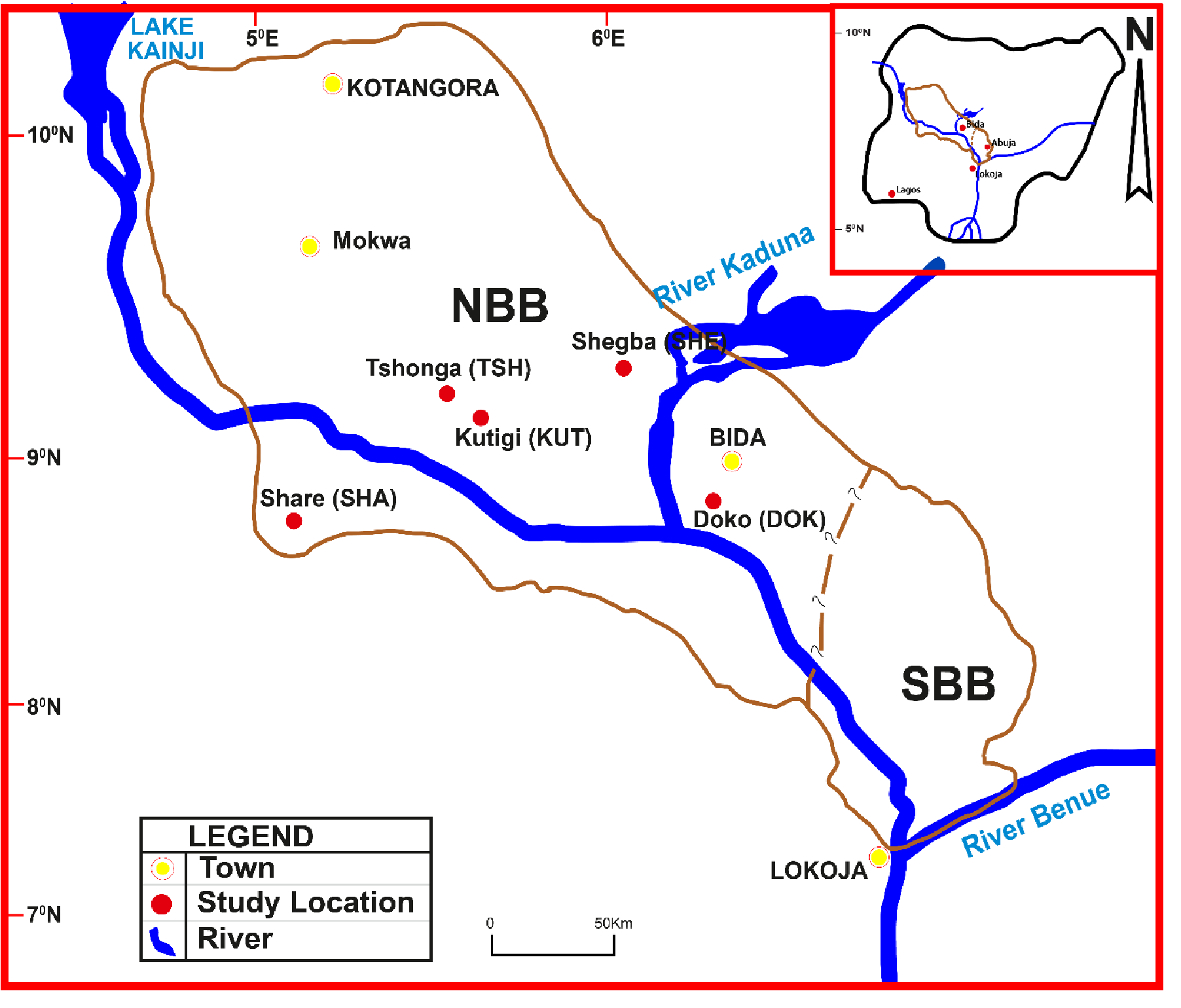Sedimentological and weathering signature investigation of claystones from Northern Bida Basin, Central Nigeria
Keywords:
Claystone, Sedimentology, Paleoweathering, Provenance, Raw materialsAbstract
This study investigates claystone samples from the northern Bida Basin, northcentral Nigeria, using sedimentological analysis, bulk geochemical techniques (X-ray fluorescence and inductively coupled plasma mass spectrometry), and statistical methods. The research aims to assess the resource potential of the claystone by analyzing mineralogical compositions, weathering indices, and reconstructing depositional environments with emphasis on economic implications. Sedimentological studies identified two sub-facies; the laminated and massive claystones that ranges in color from white, stained-white, and brown to grey, interpreted as suspension-settled deposits of flocculated clay-sized particles within overbank fines of a floodplain. Geochemical analysis of 10 samples from five locations revealed significant SiO2(47.58–78.58%), Al2O3 (12.17–34.35%), and Fe2O3 (0.63–7.11%) contents. Comparison with published values suggests suitability for ceramics and paint production, especially after wet-sieving. Statistical visualization highlighted SiO2 and Al2O3 as dominant oxides. Factor analysis grouped the geochemical data into: (i) F1-F2 (eigenvalues > 1.0), indicating major influence of SiO2 and Al2O3 ; and (ii) F3-F5 (eigenvalues < 1.0), showing minor contributions. Ratios like Ni/Co (1.14–4.00), Cu/Zn (0.42–4.35), U/Th (0.11–0.87), V/Cr (0.04–2.15), and V/(V+Ni) (0.73–0.95) indicate oxic paleodepositional conditions. Provenance indicators such as Al2O3/TiO2 (6.77–20.84), Th/Sc (0.60–4.26), La/Sc (1.59–12.66), and chondrite-normalized REE patterns suggest a source from acidic/silicic igneous rocks. High CIA (88.94–99.49), CIW (96.72–99.94), and PIA (80.40–99.03) values indicate intense weathering in the source area, reflecting non-in-situ clay types. In conclusion, the northern Bida Basin claystones show strong potential as raw materials for ceramics, paint, and brick-making industries.

Published
How to Cite
Issue
Section
Copyright (c) 2025 S. A. Adepoju, O. J. Ojo, O. Olaniyan, T. E. Bamidele, I. S. Usman

This work is licensed under a Creative Commons Attribution 4.0 International License.







